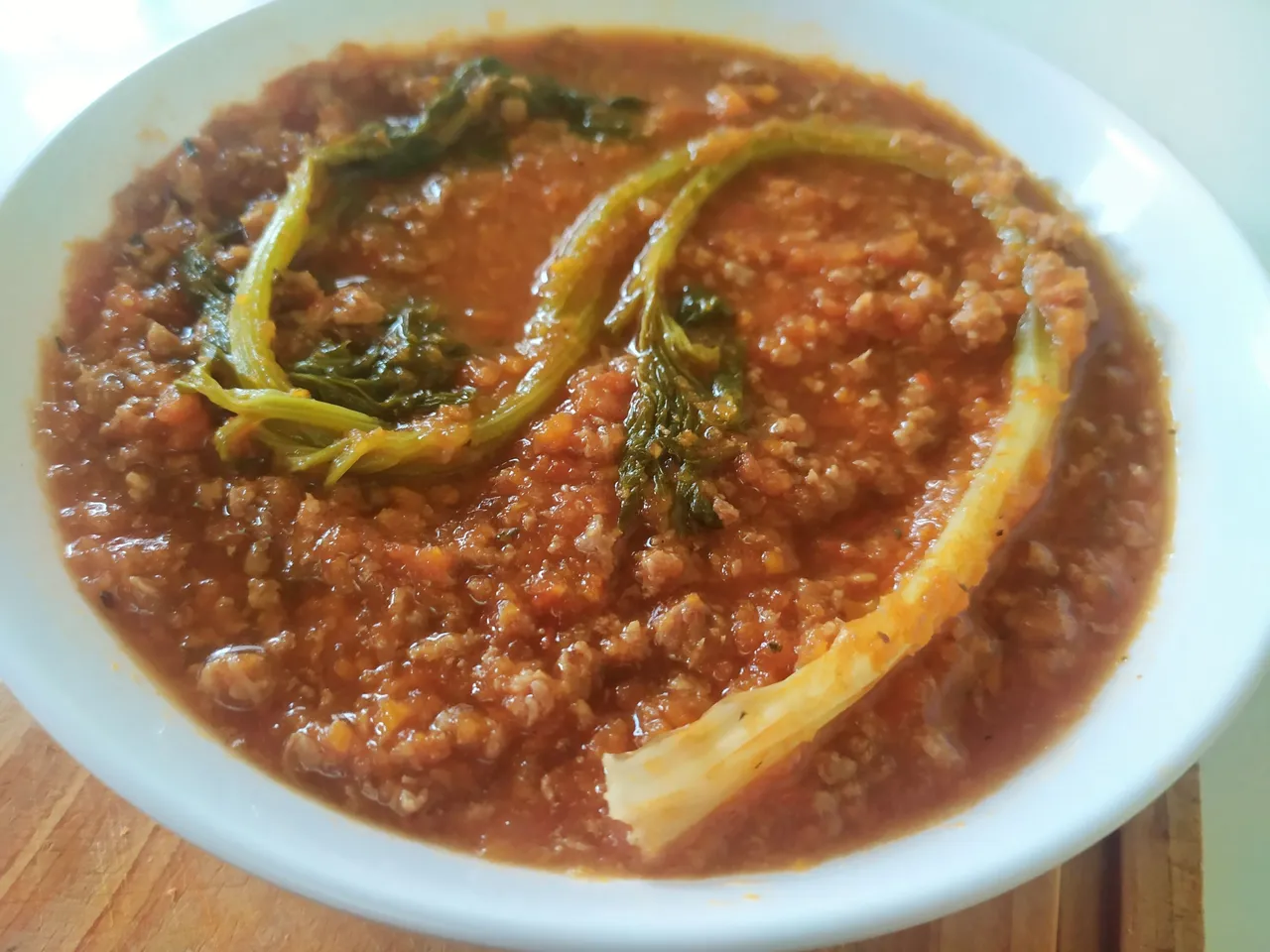
When we speak about Bolognese sauce people only imagine meat and tomato paste. Those are truly main ingredients for this sauce, but they should not be the only ones. The original sauce from the region of Bolonia is made with carrots, onions, tomato, tomato paste, celery, and ground beef. One key ingredient for me has always been Celery. I need that flavor in the sauce. Without this vegetable, it is not the same culinary experience. In this post I want to share how I prepare Bolognese sauce in a more traditional way, yet with my personal twists.
Nosotros hablamos de salsa boloñesa, la gente solo imagina carne y pasta de tomate. Esos son realmente los ingredientes principales de esta salsa, pero no deberían ser los únicos. La salsa original de la región de Bolonia se elabora con zanahoria, cebolla, tomate, pasta de tomate, apio y carne molida. Un ingrediente clave para mí siempre ha sido el apio. Necesito ese sabor en la salsa. Sin esta verdura, no es la misma experiencia culinaria. En este post quiero compartir cómo preparo la salsa boloñesa de una manera más tradicional, pero con mis toques personales.

|

|
As I mentioned before, this sauce is more than just tomatoes. We need a couple more vegetables, and of course, celery. I used carrots, onions, tomatoes, and I added peppers both bell and chili types. Peppers are common to be added on preparations where I live; plus, it can add an almost imperceptible spicy flavor. Aside from this, we need Ground beef. The only seasoning ingredients I use are salt, dry oregano leaves, and a teaspoon of soy sauce with mushrooms. This last ingredient helps me darken the preparations, and it has a property to play well with the flavor of tomatoes.
Como mencioné antes, esta salsa es más que solo tomates. Necesitamos un par de verduras más y, por supuesto, apio. Usé zanahorias, cebollas, tomates y agregué pimientos tanto de tipo campana como chile. Es común agregar pimientos a las preparaciones donde vivo; además, puede agregar un sabor picante casi imperceptible. Aparte de esto, necesitamos carne molida. Los únicos condimentos que uso son sal, hojas secas de orégano y una cucharadita de salsa de soya con champiñones. Este último ingrediente me ayuda a oscurecer las preparaciones, y tiene la propiedad de jugar bien con el sabor de los tomates.
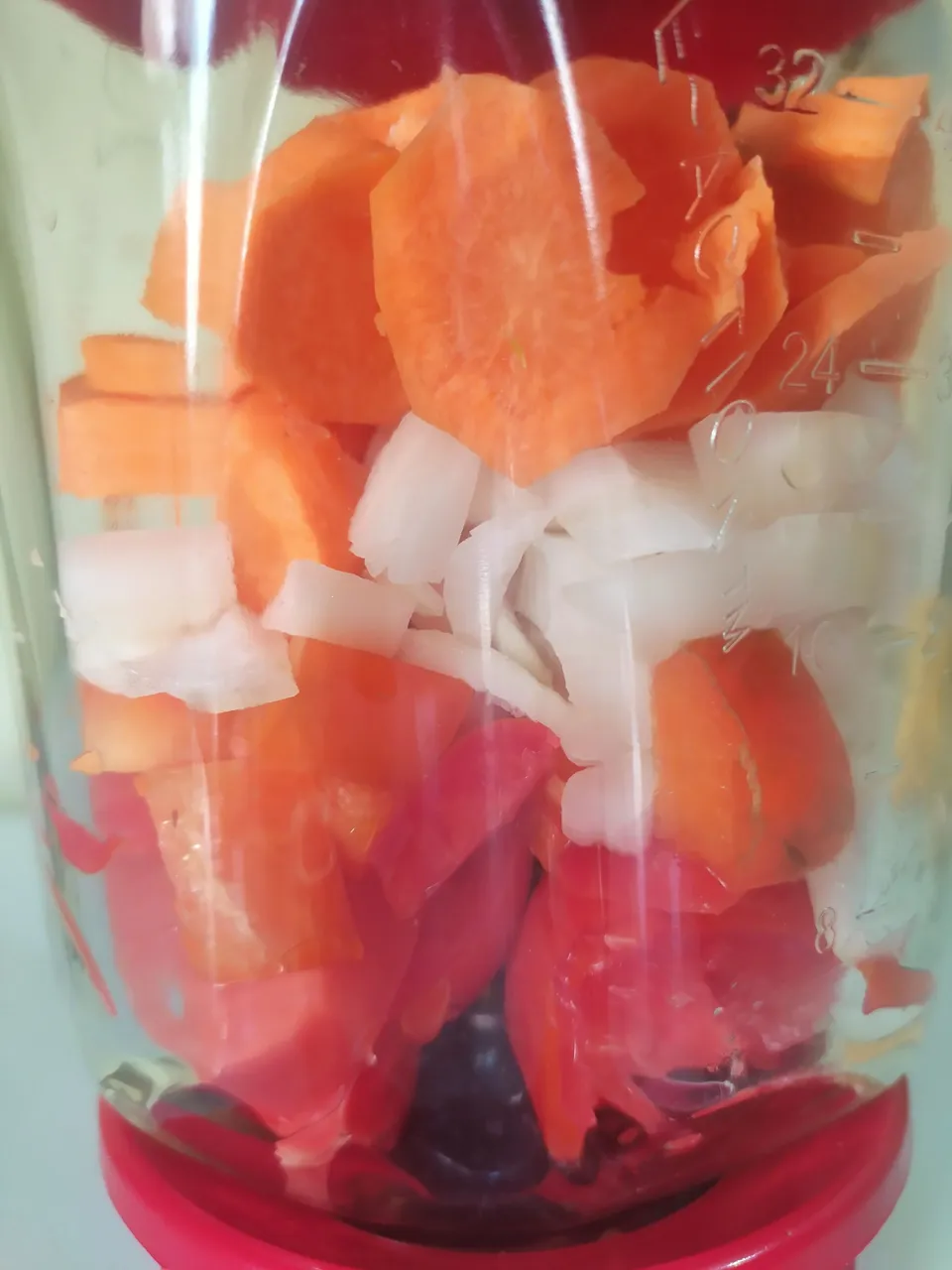
Now, the original recipe requires vegetables to be chopped in very little pieces almost as little as the ground beef. That way, it can look more like a sauce, and not like a sauce with chunks of vegetables. Nowadays, it is easier to prepare vegetables using the blender; it really helps with a sauce consistency plus it saves cooking time. So, I place tomatoes, onions, carrots, and peppers in the blender. I add only a small amount of water to it, and I process everything until it looks quite fluid. A good tip is to add first the softer vegetables and then the harder ones like carrots. The blender will have it easier that way.
Ahora, la receta original requiere que las verduras se corten en trozos muy pequeños, casi tan pequeños como la carne molida. De esa manera, puede parecer más una salsa y no una salsa con trozos de verduras. Hoy en día es más fácil preparar verduras con la batidora; realmente ayuda con la consistencia de la salsa y además ahorra tiempo de cocción. Entonces, coloco tomates, cebollas, zanahorias y pimientos en la licuadora. Le agrego solo una pequeña cantidad de agua y proceso todo hasta que se vea bastante fluido. Un buen consejo es añadir primero las verduras más blandas y luego las más duras como las zanahorias. La licuadora lo tendrá más fácil de esa manera.
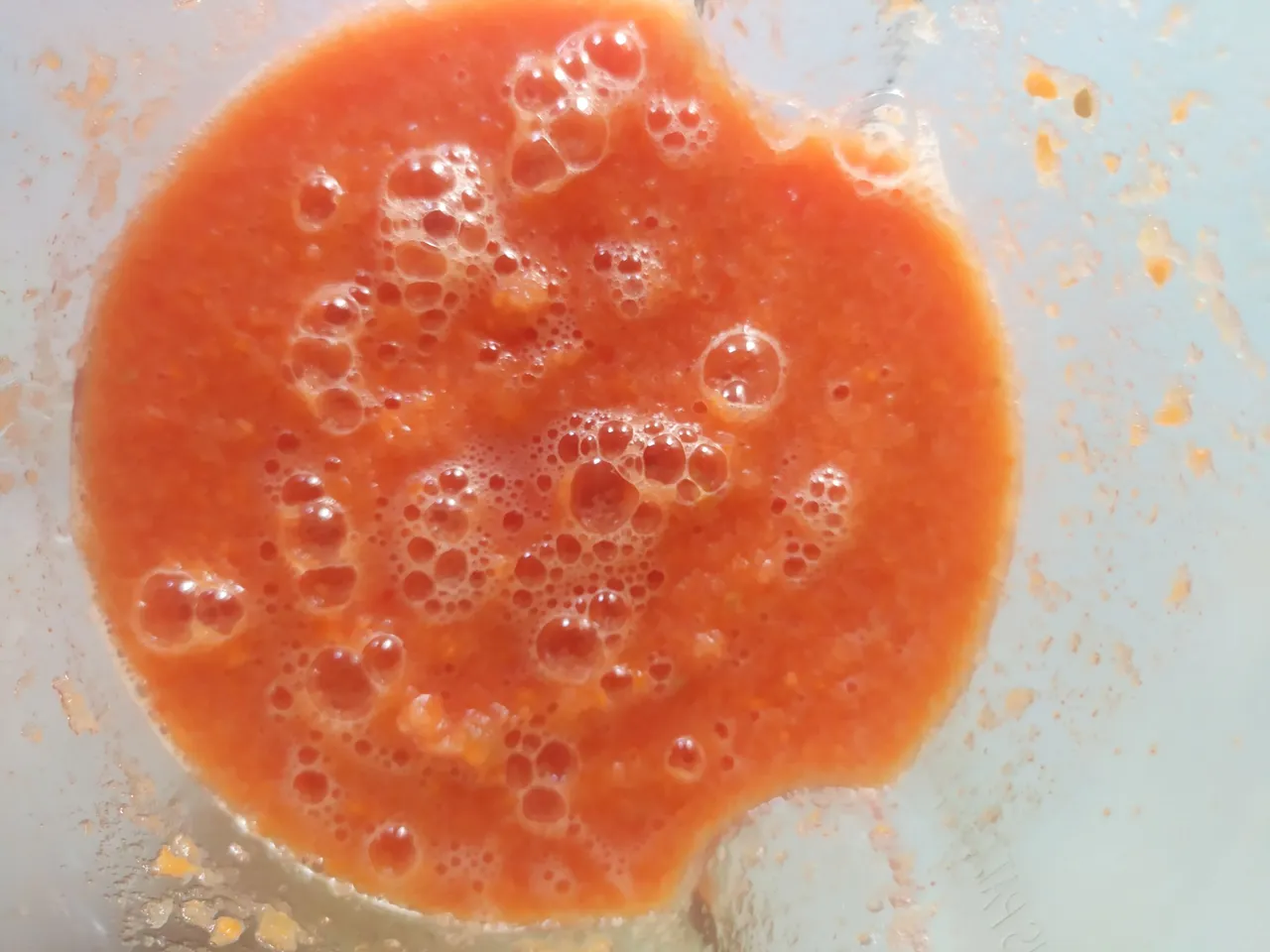
|
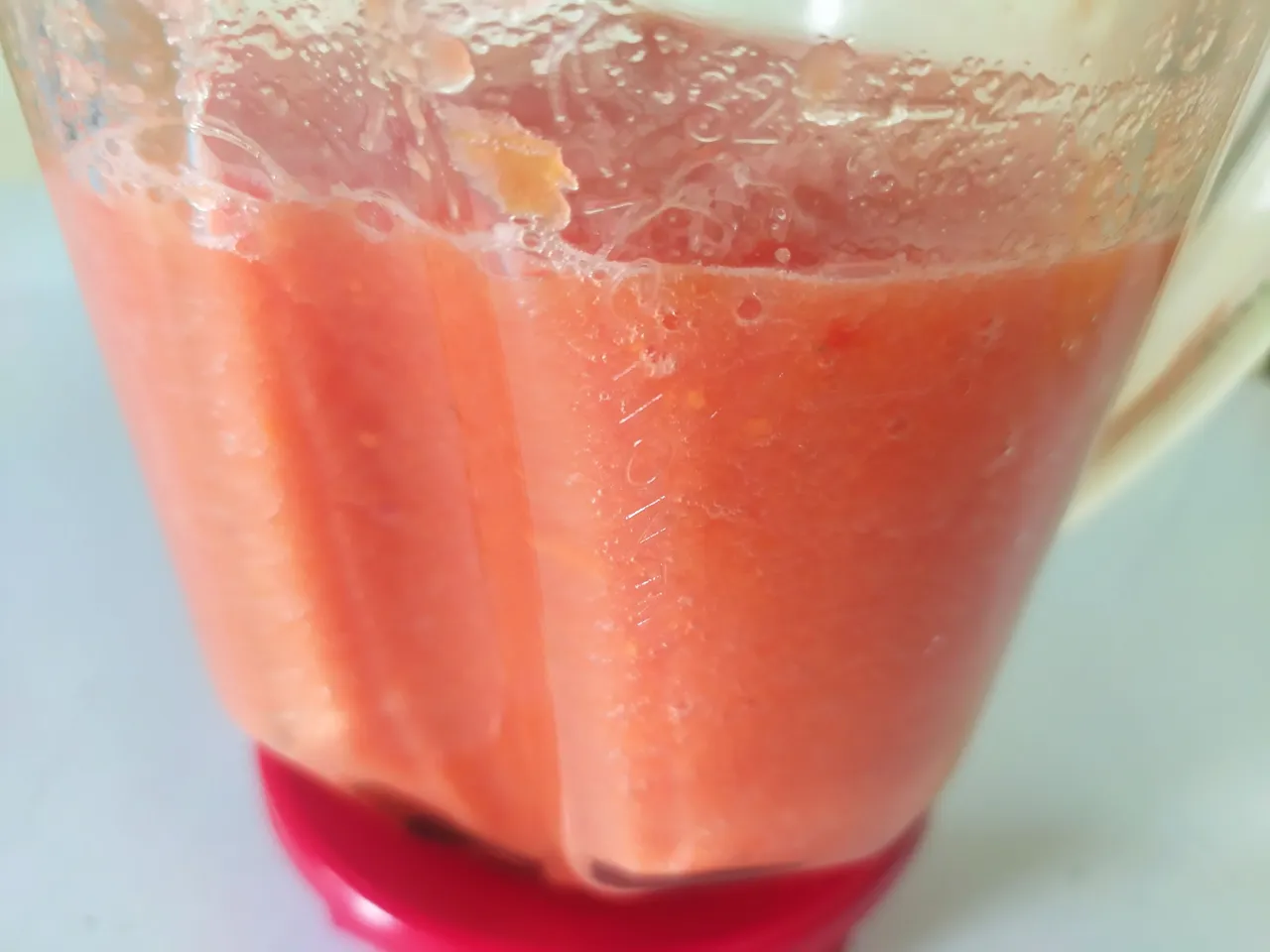
|
This is the consistency vegetables acquire once blended. Carrots provide and override colors here. If you look closely, there is some texture still in this sauce. I leave it in this state to give a denser texture at the end for my Bolognese sauce.
Esta es la consistencia que adquieren las verduras una vez licuadas. Las zanahorias proporcionan y anulan los colores aquí. Si miras de cerca, todavía hay algo de textura en esta salsa. Lo dejo en este estado para darle una textura más densa al final de mi salsa boloñesa.
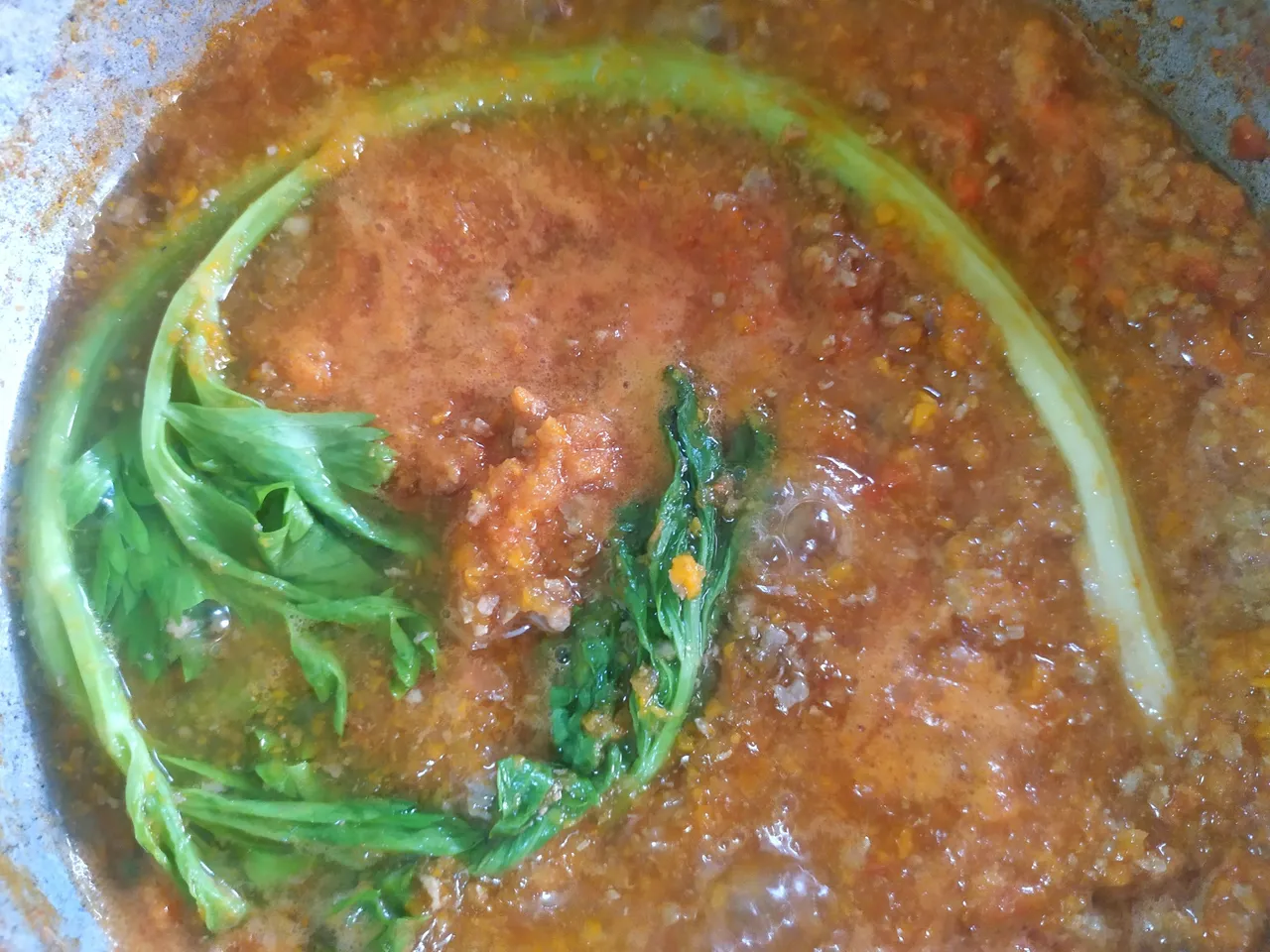
Where is the celery then? here it is. Instead of adding celery to the other vegetables I incorporate it whole into the sauce. The flavor of this branch will pour out as the sauce boils. Originally, celery should be chopped (or blended) and added to the beef for a quick stir-fry before adding more ingredients. I like it this way for a couple reasons. First, I love to eat that whole branch of celery once the sauce is ready (yes, I love celery). Second, people at home don't like celery that much, so it is a good way to give flavor but not entirely so they are comfortable with the meal.
¿Dónde está el apio entonces? aquí lo tienes. En lugar de agregar apio a las otras verduras, lo incorporo entero a la salsa. El sabor de esta rama se derramará a medida que hierva la salsa. Originalmente, el apio debe picarse (o licuarse) y agregarse a la carne para saltearlo rápidamente antes de agregar más ingredientes. Me gusta así por un par de razones. Primero, me encanta comer toda esa rama de apio una vez que la salsa está lista (sí, me encanta el apio). En segundo lugar, a las personas en casa no les gusta mucho el apio, por lo que es una buena manera de darle sabor, pero no del todo, para que se sientan cómodos con la comida.
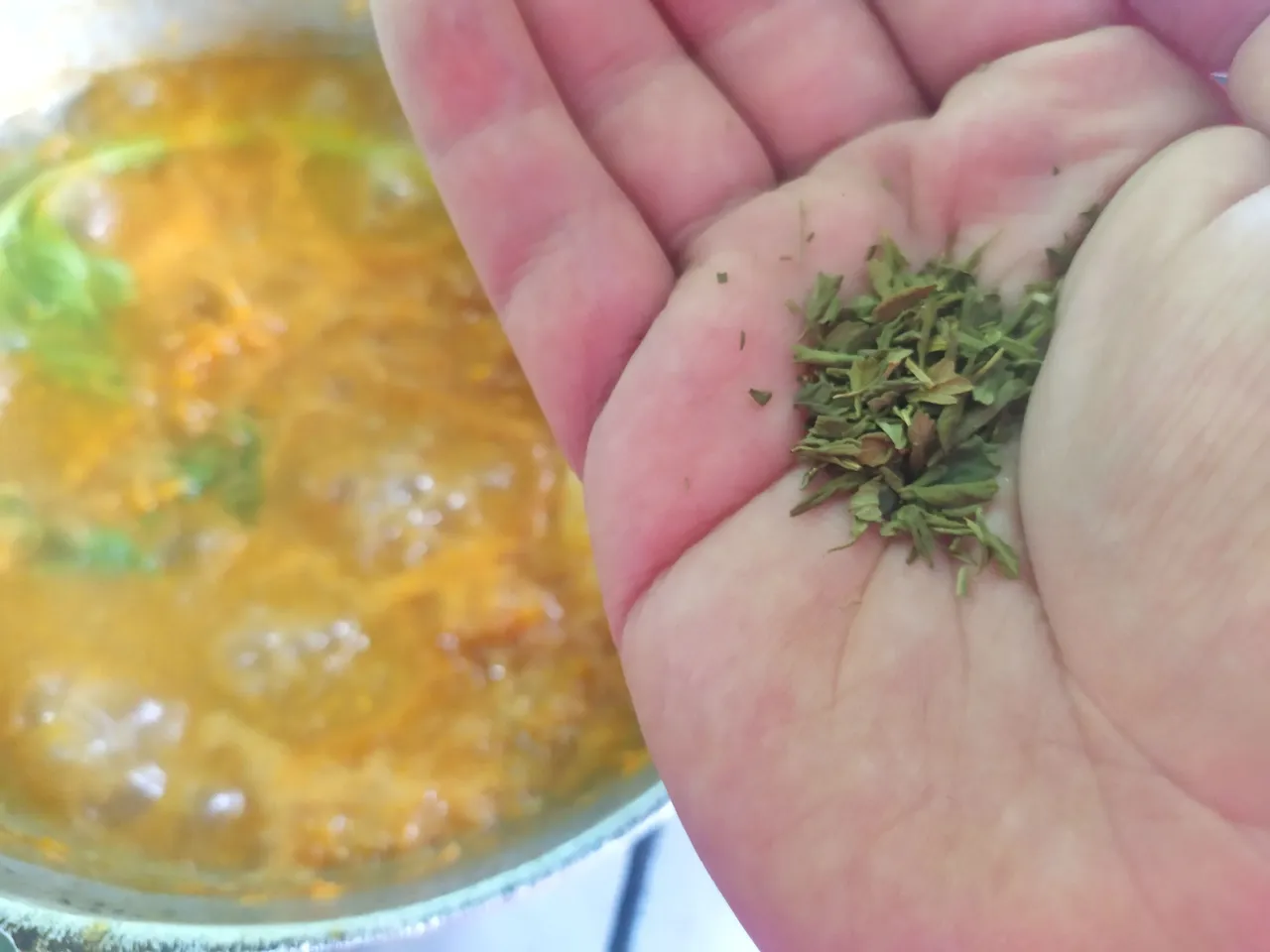
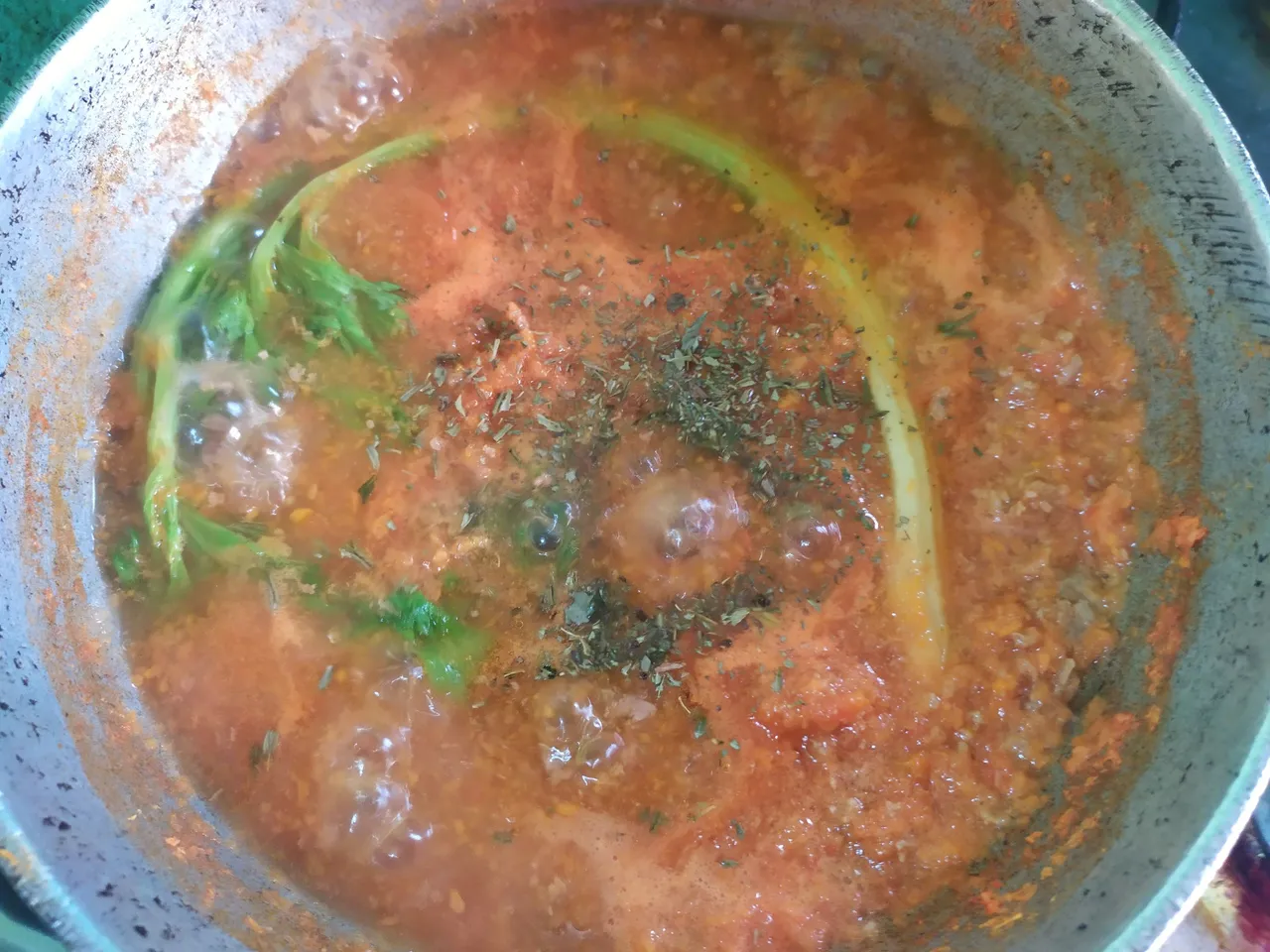
Time to season this sauce. When it comes to oregano, I prefer to use fresh or dry leaves. I don't like oregano powder because I feel I am adding more of stem powder than actual leaves. This way I ensure I am using what I want. I also incorporate the teaspoon of soy sauce with mushrooms, and salt. Soy sauce goes first because it can be salty, and I want to make sure I am managing salt carefully. This is also the moment for adding tomato paste. I sometimes skip it depending on the flavor I want in my sauce, and the amount of tomatoes I use.
Es hora de sazonar esta salsa. Cuando se trata de orégano, prefiero usar hojas frescas o secas. No me gusta el orégano en polvo porque siento que estoy agregando más polvo de tallo que hojas reales. De esta manera me aseguro de que estoy usando lo que quiero. También incorporo la cucharadita de salsa de soja con champiñones, y la sal. La salsa de soja va primero porque puede ser salada, y quiero asegurarme de que estoy manejando la sal con cuidado. Este es también el momento de añadir la pasta de tomate. A veces lo omito según el sabor que quiero en mi salsa y la cantidad de tomates que uso.


This is how it looks in the end. The cooking time for a true Bolognese sauce is about 2hrs or more. That specially goes when we use white wine as ingredient since the alcohol will evaporate after that time. Using a blender to process vegetables shortens the cooking time. Everything is already soft, so it won't need all that time not to feel like chunks in the sauce. Done this way, the sauce can take up to 30 mins, and we can still feel all the flavors and textures in it. I love this sauce; I do it like my mother taught me. As for the celery branch, I ate it alone hehe.
Tell me, how do you make you meat sauce for pasta?
Así es como se ve al final. El tiempo de cocción de una verdadera salsa boloñesa es de unas 2 horas o más. Eso ocurre especialmente cuando usamos vino blanco como ingrediente ya que el alcohol se evaporará después de ese tiempo. El uso de una licuadora para procesar las verduras acorta el tiempo de cocción. Todo ya está suave, por lo que no necesitará todo ese tiempo para no sentirse como trozos en la salsa. Hecha de esta manera, la salsa puede tardar hasta 30 minutos y aún podemos sentir todos los sabores y texturas en ella. Me encanta esta salsa; Lo hago como mi madre me enseñó. En cuanto a la rama de apio, me la comí sola jeje.
Dime, ¿cómo haces tu salsa de carne para pasta?
@gaeljosser
Redmi note 7 camera
Edition with Snapseed
